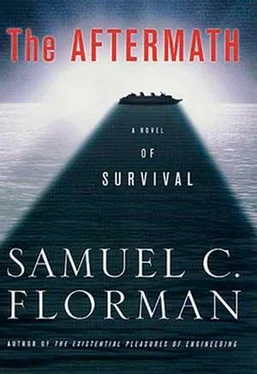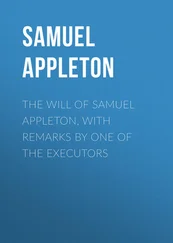Samuel Florman - The Aftermath
Здесь есть возможность читать онлайн «Samuel Florman - The Aftermath» весь текст электронной книги совершенно бесплатно (целиком полную версию без сокращений). В некоторых случаях можно слушать аудио, скачать через торрент в формате fb2 и присутствует краткое содержание. Город: New York, Год выпуска: 2001, ISBN: 2001, Издательство: Thomas Dunne books, Жанр: sf_postapocalyptic, на английском языке. Описание произведения, (предисловие) а так же отзывы посетителей доступны на портале библиотеки ЛибКат.
- Название:The Aftermath
- Автор:
- Издательство:Thomas Dunne books
- Жанр:
- Год:2001
- Город:New York
- ISBN:0-312-26652-9
- Рейтинг книги:5 / 5. Голосов: 1
-
Избранное:Добавить в избранное
- Отзывы:
-
Ваша оценка:
- 100
- 1
- 2
- 3
- 4
- 5
The Aftermath: краткое содержание, описание и аннотация
Предлагаем к чтению аннотацию, описание, краткое содержание или предисловие (зависит от того, что написал сам автор книги «The Aftermath»). Если вы не нашли необходимую информацию о книге — напишите в комментариях, мы постараемся отыскать её.
The Aftermath — читать онлайн бесплатно полную книгу (весь текст) целиком
Ниже представлен текст книги, разбитый по страницам. Система сохранения места последней прочитанной страницы, позволяет с удобством читать онлайн бесплатно книгу «The Aftermath», без необходимости каждый раз заново искать на чём Вы остановились. Поставьте закладку, и сможете в любой момент перейти на страницу, на которой закончили чтение.
Интервал:
Закладка:
Ten blacksmith forges and four smelting furnaces. That seemed like an enormously challenging enterprise. But Ichiro Nagasaka had much more to propose. He answered a few questions, waited for the group to indicate tacit assent, and then resumed.
“Yes, we need hand-forged tools. But that is only the beginning of our industrial revolution. There then remains the crucial business of making machines.” He stopped talking for a moment and rocked on his heels, hands behind his back, giving his audience time to absorb his meaning.
“You may say, okay, let’s start making steam engines, internal combustion engines, turbines, and the like. We have the necessary materials, and we have designs ready to go—plans of classic machines from earlier times and even a few improvements that our mechanical engineers have worked on. Good. And you tell me that there will be fuel for these wonderful contraptions—for the steam engines, wood and coal, and for internal combustion engines, methane and eventually petroleum from coal. Excellent. But still I am unable to move ahead. Why? Because you have not given me the ability to manufacture the splendid machines you have designed.
“Ah, you say, see how our blacksmiths become daily more pro ficient. Bless them. They can make tools which we urgently need, and which serve to augment the strength of our arms and help us harness the power of wind and water and the beasts of the field. But give me a thousand highly skilled blacksmiths and I am still unable to make these wonderful machines that you have designed. Why?” He paused again for effect, and there was total silence in the thatch-roofed meeting pavilion. Then: “I will tell you why. Because blacksmiths are human. What we need is a precision that transcends the human. Transcends the human. I look out on the promised land of the industrial revolution, but I do not have the means to enter. What is missing?”
He paused once more, and then, barely whispering, said: “Machine tools. Tools that achieve precision through geometric verities rather than an artisan’s skill.”
Wil Hardy looked up from his writing. Machine tools had been his area of special interest, the topic of his never-to-be completed Ph.D. dissertation. He had chosen the subject when he read about how radically James Watt was able to improve his steam engine once he was able to replace crudely cast cylinders and pistons with parts that were accurately machined. The new tools, little remarked in conventional history books, played a crucial role in the Industrial Revolution.
Ichiro then intoned gravely the names of what he called “the heavenly ten”: lathes for precise circularity; shapers and planers, which scrape flat metal surfaces, much the way a carpenter planes a piece of wood; milling machines, which use teethed wheels to cut grooves of diverse shapes; drill presses, which cut holes, and ream, and countersink; grinding machines, with abrasive materials, which finish off metal parts with accuracy and smoothness; power presses for shearing, bending, squeezing, and hammering; punch presses to stamp out metal parts from sheet metal and form the parts to a desired shape; metal-cutting saws; and gear-cutting machines.
Next, he revealed his plan for developing a machine tool work shop, a scheme that seemed to some rather arbitrary, even capricious; though the same could be said of many of the schemes they had agreed to already.
For each of the ten basic machine tools, a leader was to head up a development team of twenty people. Several of the proposed leaders were highly respected members of the Society of Manufacturing Engineers. A few were Inlanders who made up in practical experience what they lacked in professional credentials. The “troops” to go with these generals consisted of engineering officers and engine-room workers from the Queen of Africa, plus experienced mechanics from among the Inlanders. There was an abundance of talent.
Suddenly Lucas Moloko, who had been pacing back and forth in the rear of the group, turned abruptly and stepped forward. “I don’t understand,” he said. “You haven’t explained how you’re going to make these machines without having machines to make them. ”
“Afair question,” Ichiro responded. “We must design these machines with great cunning, and make them with great care. Some of the parts can be formed by our blacksmiths with hammer and tongs. Others will be cast in molds, using the molten iron that will be produced by our smelters. We will make the molds from sand, with a binder of clay and water. The patterns for the molds will be meticulously crafted from wood. The castings will be carefully filed, and critical surfaces will be carbonized for added strength. Remember, we will make these parts using geometric principles—the screw, the circle, the inclined plane, the toothed gear. Then these devices will help us make future machines with less effort and more precision.”
“What will make these marvelous contraptions run?”
“We will start with water wheels turning large shafts; the shafts will drive leather belts that will power the machines.”
“Just like those fantastic photos of eighteenth century factories,” Wil Hardy murmured almost soundlessly.
Nagasaka bowed to his audience, indicating that his presentation was complete. The subcommittee members appeared to be mesmerized.
But, after a few moments of silence, Gordon Chan raised his hand, shaking his head in mock bewilderment. Chan’s field was chemical engineering, and his main concern was the work of the Research and Development group in planning for the future of this specialty. However, his friendly rivalry with Nagasaka, plus his wide-ranging curiosity, inspired a keen interest in plans for the evolving iron and steel enterprise.
“Ichiro, my esteemed colleague,” Chan said, “I recall that just before the recent five-day recess for public review comments, you maneuvered our subcommittee into setting aside a workforce of one thousand for your grandly conceived—and unquestionably important—venture. By my calculation, however, you have not accounted for nearly that large a number. Ten blacksmith shops with fifteen workers each makes one hundred and fifty. Add four smelting furnaces with fifty people, plus ten machine tool teams of twenty—I believe your total is only five hundred and fifty.”
“Thank you, good friend, for your kind and close attention,” Nagasaka responded. “Let me tell you what I plan to do with the other four hundred and fifty. First of all, I want to have fifty people working on the next stage of ironmaking—better and larger furnaces—and then large-scale conversion of iron into steel, either through a long-established process like the Bessemer or through some other means reflecting more contemporary technologies. We cannot be satisfied with two-hundred-year-old methods. Fifty people are certainly not too many to be working on improvements and change.
“As for the other four hundred, I want to assign two hundred to supplementing the work of the miners, and two hundred to helping make and distribute charcoal and coke. I don’t doubt that the miners will get us materials out of the ground. But we’ll need crews to work with the ore, to break it up, sort it, sift it, to separate out as much useless rock as possible before bringing it to our furnaces. And then we have to get all the raw materials to exactly where we want them exactly when we need them. We cannot rely upon the miners for that.
“The same applies to charcoal and coke. The lumber people have been assigned the responsibility of making charcoal, but they are not likely to be overly concerned about our schedules. As for converting coal to coke, it doesn’t appear as if anybody has been assigned that responsibility. That is probably my own fault. I didn’t raise the question. In a modern steel plant, the process is designed to accommodate raw coal. But for the furnaces that we’ll be using, coke will be needed as soon as we run short of charcoal, which will probably be sooner than we like to think. So, believe me, good friend, all of the people assigned to the metals operation will be put to good use.”
Читать дальшеИнтервал:
Закладка:
Похожие книги на «The Aftermath»
Представляем Вашему вниманию похожие книги на «The Aftermath» списком для выбора. Мы отобрали схожую по названию и смыслу литературу в надежде предоставить читателям больше вариантов отыскать новые, интересные, ещё непрочитанные произведения.
Обсуждение, отзывы о книге «The Aftermath» и просто собственные мнения читателей. Оставьте ваши комментарии, напишите, что Вы думаете о произведении, его смысле или главных героях. Укажите что конкретно понравилось, а что нет, и почему Вы так считаете.












